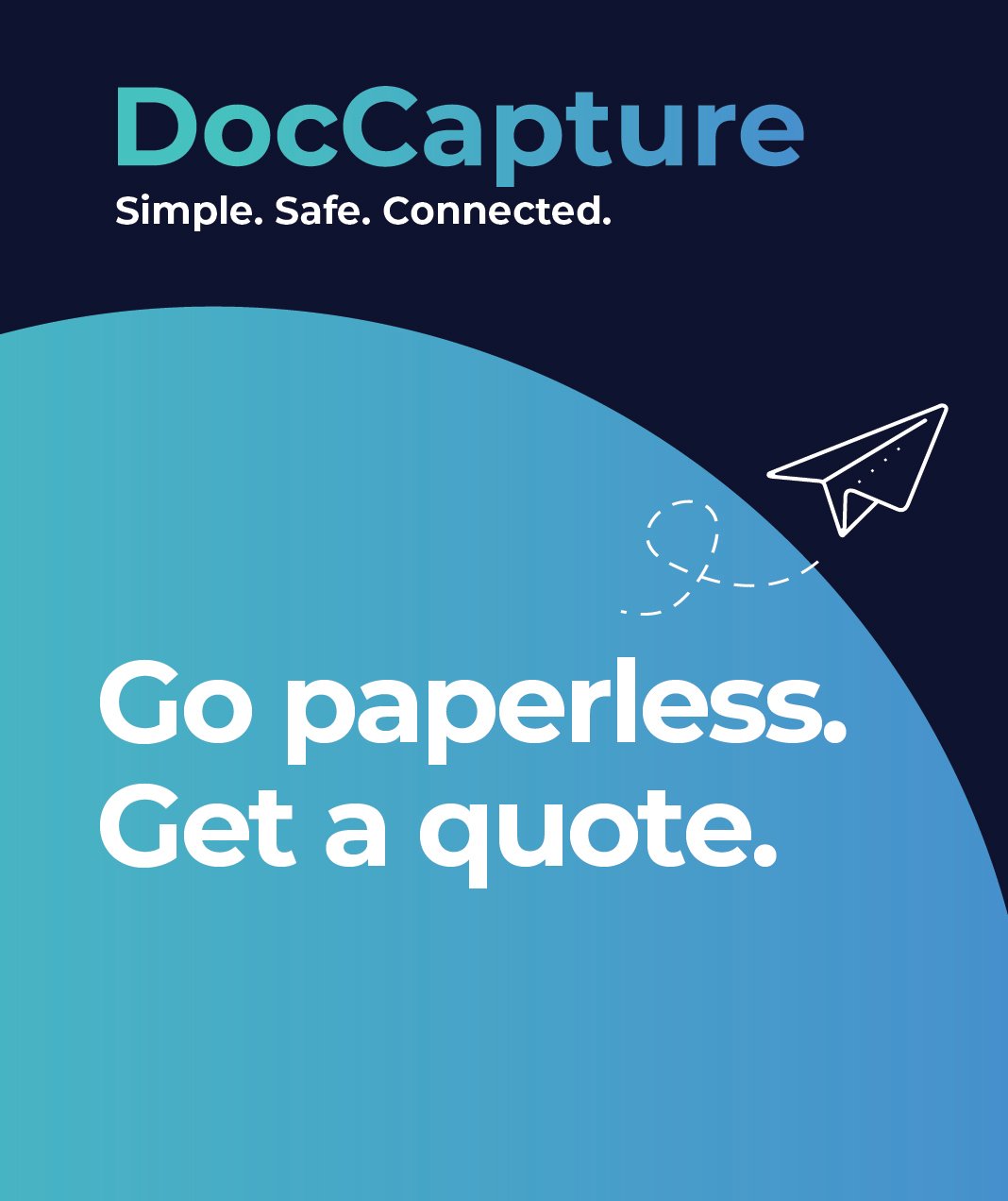Integrating Scanning Solutions Across Multi-Level Government Systems
Table of contents
Government agencies are under increasing pressure to modernize — not just for efficiency, but to maintain public trust, ensure compliance, and facilitate data-driven decision-making. One key area ripe for transformation is document management. From decades-old paper records to incoming physical forms, inefficient legacy systems still dominate much of the workflow in federal, state, and local agencies.
Integrating scanning solutions in government systems isn’t merely about digitizing documents — it’s about creating a secure, interoperable infrastructure that connects departments, enables rapid access to information, and supports compliance with stringent records retention laws. For CIOs, IT managers, and compliance officers, the challenge lies in adopting a solution that works seamlessly across multiple jurisdictions and bureaucratic layers without disrupting essential services.
This blog explores how document scanning services — when strategically integrated — can help overcome these barriers, streamline operations, and prepare agencies for a future that demands both agility and accountability.
Why Integration Matters in Government Document Scanning
When government agencies consider digital transformation, they often focus on software upgrades, cybersecurity, or data analytics. However, digitizing paper records and integrating scanning solutions in government systems is foundational — it's the connective tissue that supports every digital initiative. Without integration, scanned documents can become isolated data silos, limiting accessibility and undermining efficiency.
Multi-Department Interoperability
Most government entities operate across multiple departments — from licensing and public health to infrastructure and procurement — each with unique workflows and compliance requirements. Integrating scanning solutions ensures that digital records can flow seamlessly across these departments without redundant processes or data loss.
For example, when a building permit application is scanned at the municipal level, integration allows state-level agencies to instantly access that same file if needed for broader regulatory compliance. This reduces duplication, speeds up approvals, and eliminates the risk of inconsistent documentation.
Reducing Bureaucratic Bottlenecks
Without an integrated scanning solution, every document must be manually indexed, categorized, and stored — often in separate systems. This not only slows down daily operations but increases the risk of non-compliance with records retention mandates. With solutions like those outlined on DocCapture’s Government Document Scanning page, agencies can streamline both back-end and citizen-facing processes.
For more on how scanning drives productivity and modernization across different levels of government, check out these posts:
Key Challenges in Implementing Scanning Solutions Across Government Systems
Despite the clear advantages, government agencies often face significant hurdles when integrating scanning solutions. These challenges aren't just technical — they span organizational culture, budget priorities, and regulatory complexity.
Legacy Infrastructure and Incompatible Systems
Many agencies still operate on outdated IT systems that were never designed for cross-departmental interoperability. Introducing a modern scanning solution into this environment can create friction if the existing infrastructure can’t support APIs, metadata tagging, or automated routing.
To succeed, integration must include a roadmap for modernization that respects budget constraints while prioritizing compatibility with current platforms. This phased approach prevents operational disruptions and ensures that digital files are not only scanned but also immediately usable within broader systems.
Resistance to Change
Change management is often underestimated in public sector projects. Staff may be wary of new technology, particularly if it seems complex or likely to add to their workloads. A well-integrated scanning solution minimizes manual input by leveraging automation, machine learning, and intelligent document recognition — which ultimately reduces user fatigue and builds confidence in the system.
Compliance and Security Requirements
Government agencies must adhere to strict guidelines around data privacy, retention, and auditability. Integrating scanning solutions means selecting providers that understand these nuances and can deliver compliant services at scale.
In this context, scanning is not a simple IT function — it’s a cornerstone of digital governance. As explored in Modernizing Government: The Role of Document Scanning, the right solution protects both public data and institutional integrity.
Best Practices for Successful Integration of Scanning Solutions
For government agencies seeking to modernize, a well-executed integration strategy is key to unlocking the full value of scanning technologies. Below are best practices that help ensure successful deployment across complex bureaucratic systems.
Conduct a Comprehensive Needs Assessment
Before implementing any solution, agencies should evaluate:
-
Existing document volumes and formats
-
Interdepartmental data sharing requirements
-
Security protocols and compliance regulations
-
Legacy systems and potential integration points
This upfront clarity informs vendor selection, process design, and training needs.
Choose a Scanning Partner with Government Experience
Vendors with a track record in public sector digitization understand the operational and legal challenges involved. They can ensure:
-
Secure chain-of-custody for sensitive documents
-
Customized metadata for easy indexing and retrieval
-
Scanning procedures aligned with retention schedules
DocCapture’s services are tailored specifically for government environments, as detailed in their Government Document Scanning offering.
Standardize Metadata and Indexing Structures
Inconsistent indexing is a major obstacle to integration. Agencies should adopt a unified taxonomy and metadata framework that enables seamless document retrieval and system interoperability across departments and jurisdictions.
Prioritize User Training and Ongoing Support
Staff must feel confident using the new systems. Training should focus not just on how to scan documents, but how to access and use digital files effectively. A good scanning solution will include intuitive interfaces and reliable support channels.
For insights into how different departments have handled this transition, read Government Departments and Document Imaging Services.
Real-World Impact: Efficiency, Transparency, and Cost Savings
Once integrating scanning solutions in government systems is complete, the benefits extend far beyond document digitization. Agencies experience measurable improvements in performance, compliance, and citizen satisfaction.
Faster Access to Information
Digitized records can be retrieved in seconds rather than hours or days, speeding up internal processes and service delivery. For instance, a scanned birth certificate can be securely accessed by both local and state agencies without duplication, delays, or errors.
Reduced Operational Costs
Paper storage, manual filing, and physical transportation of records are costly and inefficient. Scanning eliminates these overheads. Combined with reduced labor and faster turnaround times, most agencies see significant ROI within months of integration.
Enhanced Transparency and Accountability
Integrated scanning systems make it easier to track document access, automate audit trails, and maintain version control — all of which support compliance and open-government initiatives.
Local agencies in particular have leveraged scanning to modernize their citizen-facing services. Learn more in Document Scanning in Local Government and Scanning Government Records.
Conclusion
Modern governance requires more than digital ambition — it demands a solid, integrated foundation that connects every department, supports compliance, and enhances public trust. For agencies striving to eliminate inefficiencies and improve data access, integrating scanning solutions in government systems is a smart and scalable move.
By following best practices and partnering with experienced providers like DocCapture, government leaders can transform outdated processes into streamlined, secure, and fully interoperable systems. The result? Faster services, lower costs, and a more transparent relationship with the communities they serve.
Ready to take the next step? Fill out our “Get a Quote” to start building your custom document scanning solution today.
Share this
You May Also Like
These Related Stories

Integrating Legacy Systems with Modern Document Solution in Healthcare

Integrating Modern Document Management Systems in Financial Services

